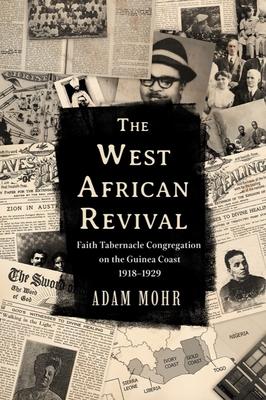In eleven short years, from 1918 to 1929, Faith Tabernacle Congregation, a small divine healing church in Philadelphia, spread over the Guinea Coast, garnering over 250 branches and nearly 11,000 members without ever sending missionaries from the United States. Communications were made solely through the exchange of literature, letters, money, and the occasional radiogram across the Atlantic. This rapid expanse constituted a great revival: the West African Revival.
In The West African Revival, Adam Mohr compiles historical documents from Faith Tabernacle's archive in Philadelphia as well as several other churches that branched from Faith Tabernacle in West Africa (mainly Ghana and Nigeria) and the United States such as the First-Century Gospel Church, the Apostolic Church, the Christ Apostolic Church, and the Church of Pentecost. Writing for an audience of scholars from the fields of African Christianity, Global Christianity, and African Studies, Mohr engages literature from the Influenza Pandemic of 1918-1919, African Traditional Religion (predominantly anti-witchcraft cults), the relationship of capitalism to Christianity, political and social conflict, and early Pentecostalism in West Africa.
Significantly, the West African Revival was the predecessor to Pentecostalism in West Africa-- Ghana and Nigeria particularly. Mohr's findings compel scholars to rethink the historical relationship of African indigenous churches to Pentecostalism in West Africa in addition to the historical relationship between South African Zionism and Nigerian Aladura.
